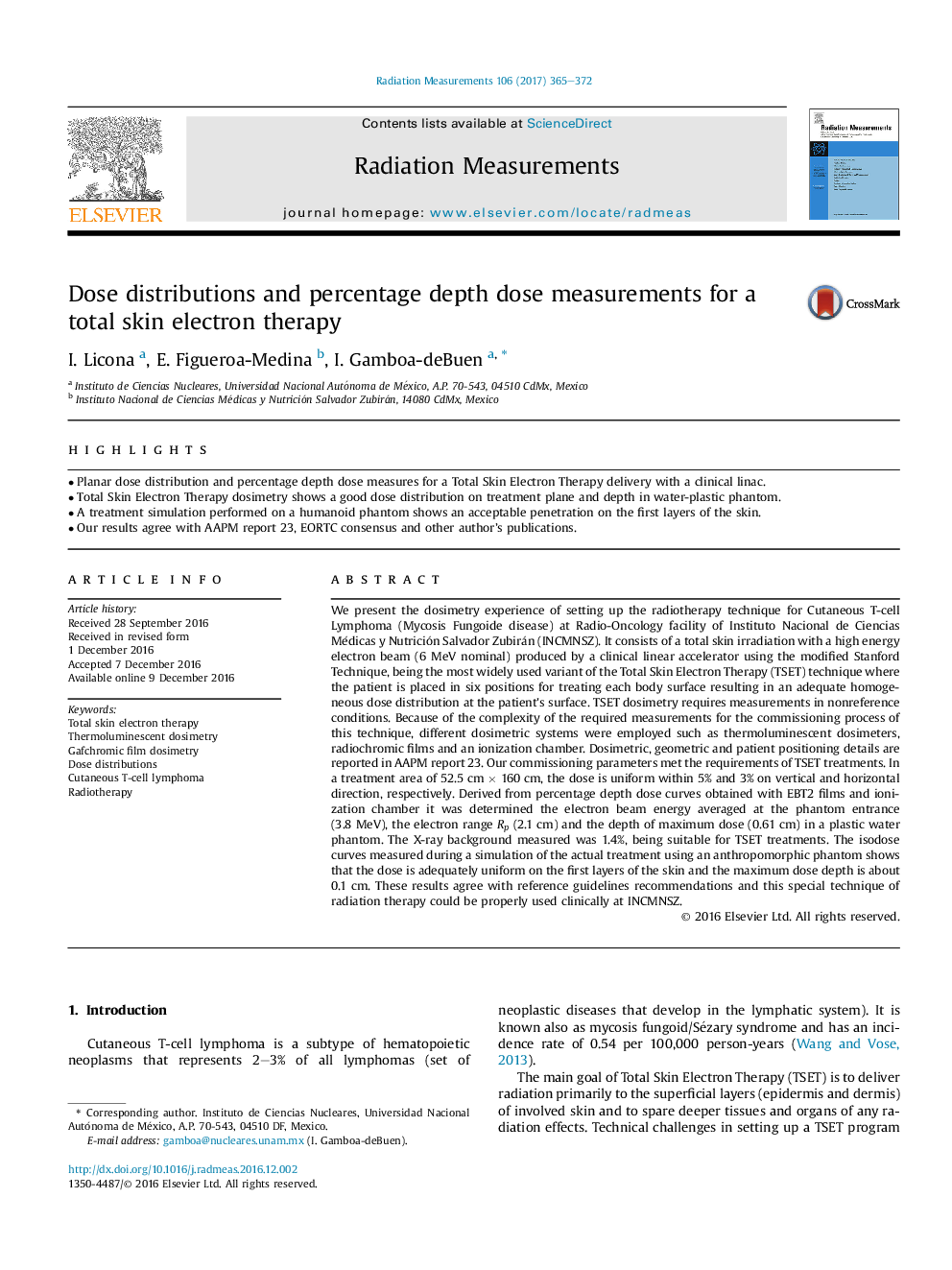| Article ID | Journal | Published Year | Pages | File Type |
|---|---|---|---|---|
| 8250360 | Radiation Measurements | 2017 | 8 Pages |
Abstract
We present the dosimetry experience of setting up the radiotherapy technique for Cutaneous T-cell Lymphoma (Mycosis Fungoide disease) at Radio-Oncology facility of Instituto Nacional de Ciencias Médicas y Nutrición Salvador Zubirán (INCMNSZ). It consists of a total skin irradiation with a high energy electron beam (6 MeV nominal) produced by a clinical linear accelerator using the modified Stanford Technique, being the most widely used variant of the Total Skin Electron Therapy (TSET) technique where the patient is placed in six positions for treating each body surface resulting in an adequate homogeneous dose distribution at the patient's surface. TSET dosimetry requires measurements in nonreference conditions. Because of the complexity of the required measurements for the commissioning process of this technique, different dosimetric systems were employed such as thermoluminescent dosimeters, radiochromic films and an ionization chamber. Dosimetric, geometric and patient positioning details are reported in AAPM report 23. Our commissioning parameters met the requirements of TSET treatments. In a treatment area of 52.5 cm Ã 160 cm, the dose is uniform within 5% and 3% on vertical and horizontal direction, respectively. Derived from percentage depth dose curves obtained with EBT2 films and ionization chamber it was determined the electron beam energy averaged at the phantom entrance (3.8 MeV), the electron range Rp (2.1 cm) and the depth of maximum dose (0.61 cm) in a plastic water phantom. The X-ray background measured was 1.4%, being suitable for TSET treatments. The isodose curves measured during a simulation of the actual treatment using an anthropomorphic phantom shows that the dose is adequately uniform on the first layers of the skin and the maximum dose depth is about 0.1 cm. These results agree with reference guidelines recommendations and this special technique of radiation therapy could be properly used clinically at INCMNSZ.
Related Topics
Physical Sciences and Engineering
Physics and Astronomy
Radiation
Authors
I. Licona, E. Figueroa-Medina, I. Gamboa-deBuen,
